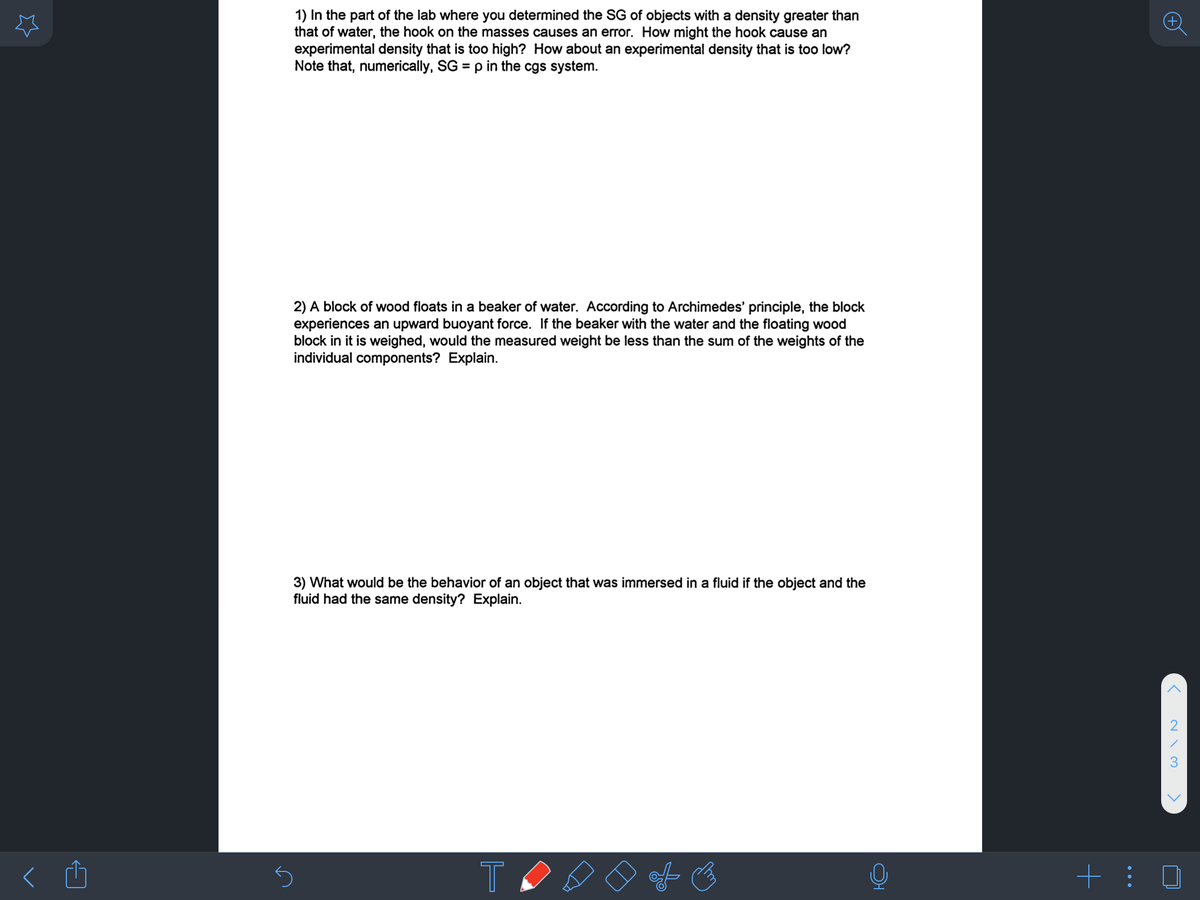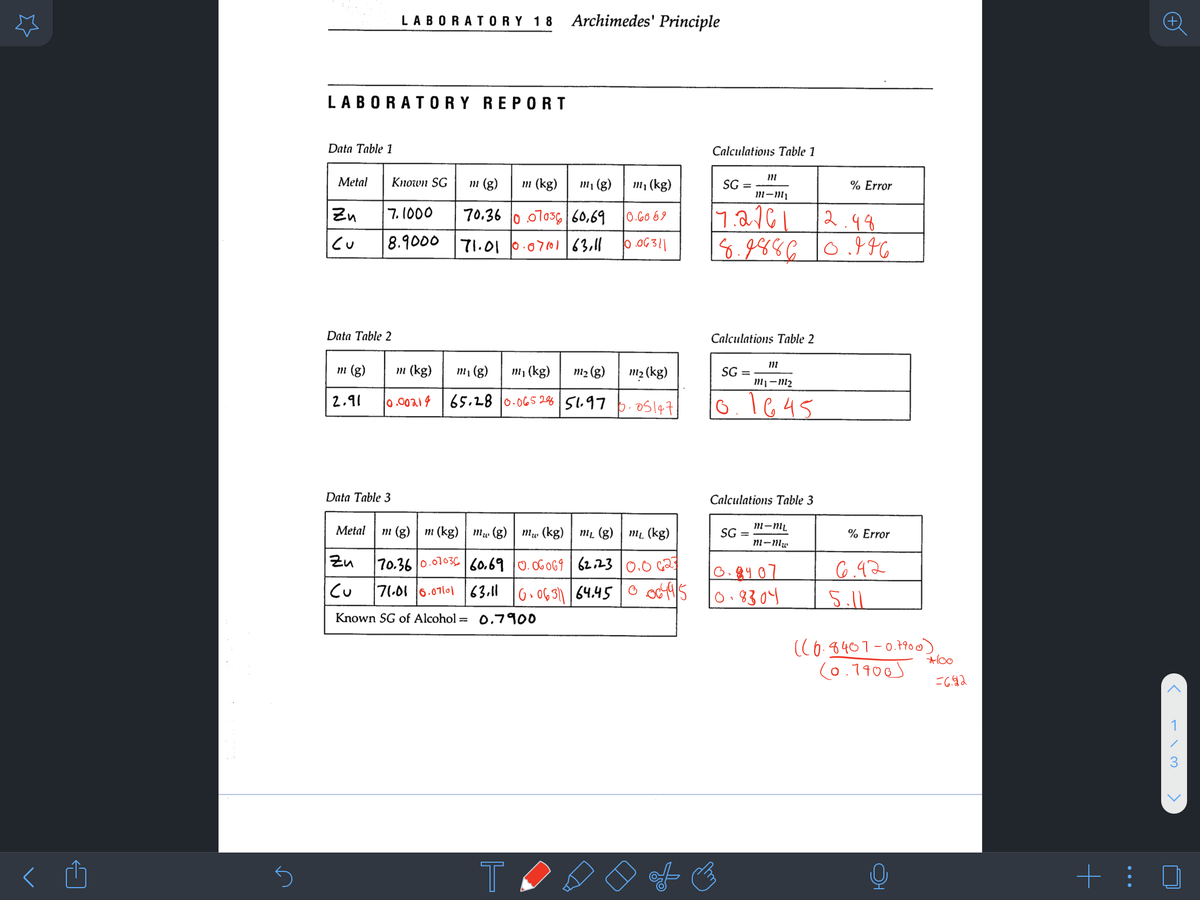2) A block of wood floats in a beaker of water. According to Archimedes' principle, the block experiences an upward buoyant force. If the beaker with the water and the floating wood block in it is weighed, would the measured weight be less than the sum of the weights of the individual components? Explain. 3) What would be the behavior of an object that was immersed in a fluid if the object and the fluid had the same density? Explain.
i need help with number 2 and 3 questions on the images
Archimedes' Principle
Use the laboratory balance to determine the mass of each of the two unknown metal cylinders.Record these values asmin Data Table 1. The unknowns should have their metal type stamped onthem, or else ask your instructor for the metal type of the unknowns. Record the metal of the unknownsin Calculations Table 1.2.Place a clamp on the laboratory table and screw a threaded rod in the clamp. Slide the rod into thehole designed for that purpose in the base of the laboratory balance. Adjust the height of the balanceabove the table to allow the 1000 mL beaker to fit under the balance. Fill the beaker about three-fourthsfull of water.3.Tie a piece of light string or thread around one of the unknowns and suspend it from one of the slotsin the left arm underneath the balance. Determine the apparent mass with the unknown suspendedcompletely below the surface of the water. Be sure that the unknown is not touching the side of thebeaker or is in any way supported by anything other than the string. Record the mass reading ofthe balance asm1in Data Table 1.4.Repeat Steps 1 through 3 for the second unknown.5.From Appendix II obtain the knownSGof the metal for each of the unknowns and record thosevalues in Data Table 1.6.Use Equation 7 to calculate theSGfor each of the unknowns. Record the experimental values of thespecific gravity in Calculations Table 1.7.Calculate the percentage error in your value of theSGfor each of the unknowns compared to the knownvalues. Record them in Calculations Table 1.
Object Density Less Than Water1.Using the laboratory balance, determine the mass of the cork and record it asmin Data Table 2.2.Determine the apparent mass with the cork suspended in air and a lead weight tied below submergedin water as shown in Figure 18-2(a). Record that value asm1in Data Table 2.3.Determine the apparent mass with both the cork and the lead weight submerged in water as shownin Figure 18-2(b). Record that value asm2in Data Table 2.4.Use Equation 8 to calculate the specific gravitySGfor the cork and record it in Calculations Table 2.Liquid Unknown1.Use one of the unknown metal cylinders from the original procedure. Its massmand its apparent massin water have already been determined. Record those values in Data Table 3.2.Use a very clean beaker and fill it about three-fourths full of alcohol. Determine the apparent mass ofthe metal cylinder in alcohol. Record it asmLin Data Table 3. Return the alcohol to its containerwhen you have finished with it. Be very careful not to have any spark or flame near the alcohol.3.Repeat Steps 1 and 2 for the other unknown metal.4.From Appendix II determine the known value of the specific gravity of alcohol and record it in DataTable 3.5.Use Equation 9 to determine the specific gravity of the alcohol for the two trials with the differentmetals. Record those values in Calculations Table 3.6.Calculate the percentage error in each of the two measurements of the specific gravity of alcohol.Record the results in Calculations Table 3.


Trending now
This is a popular solution!
Step by step
Solved in 2 steps with 1 images


